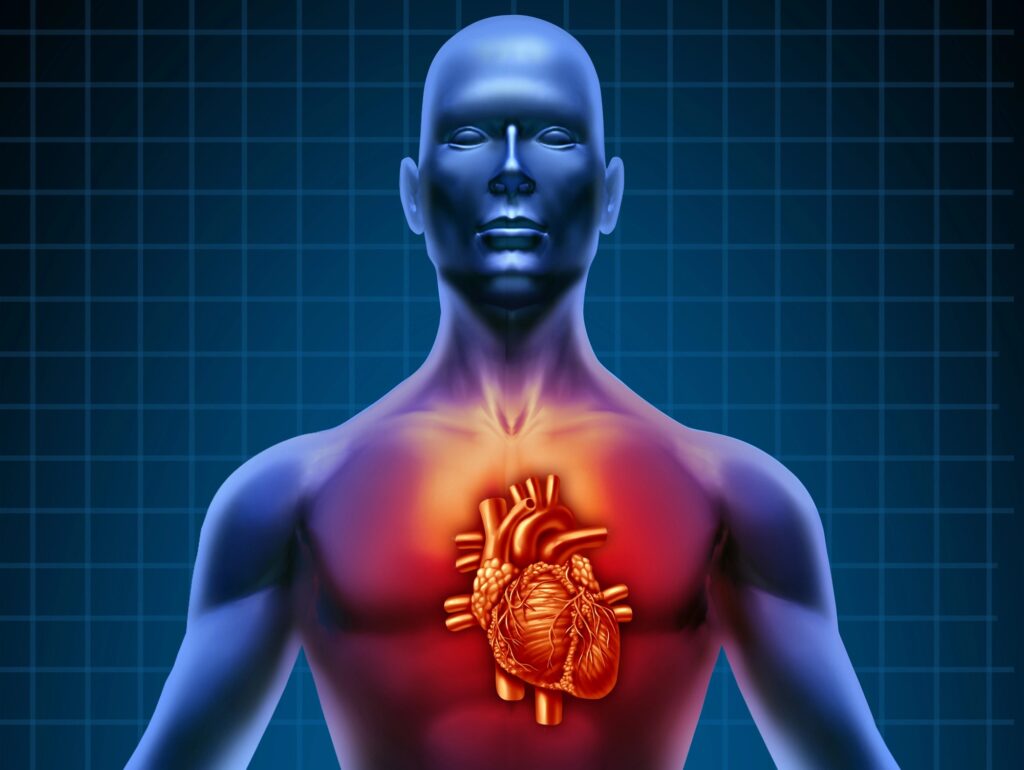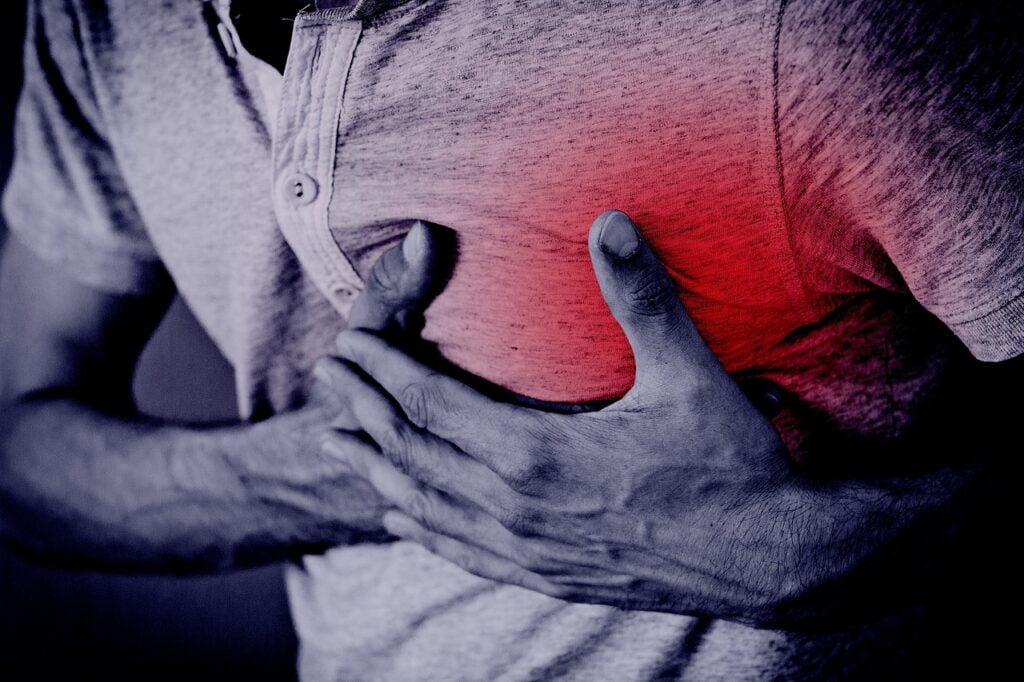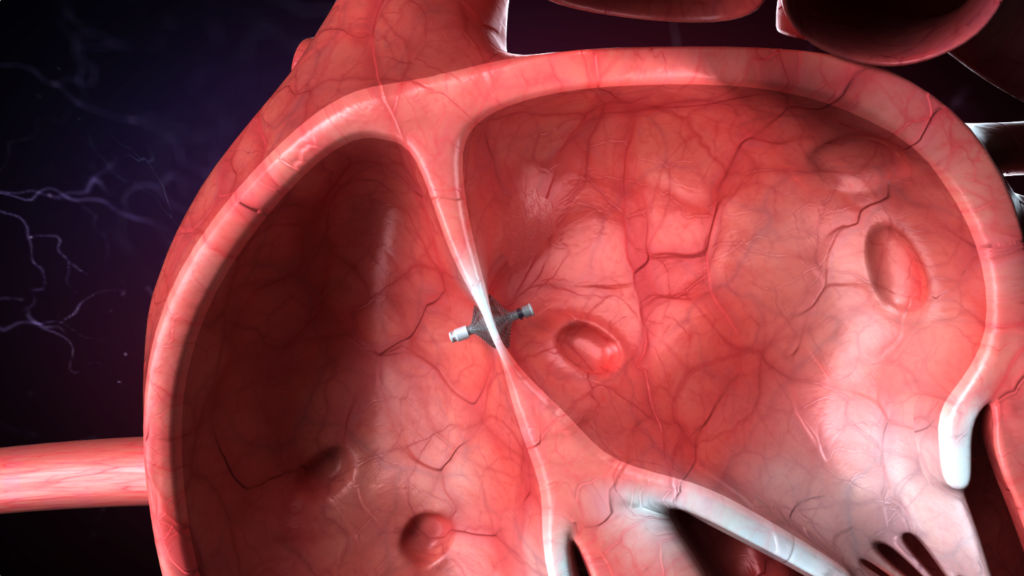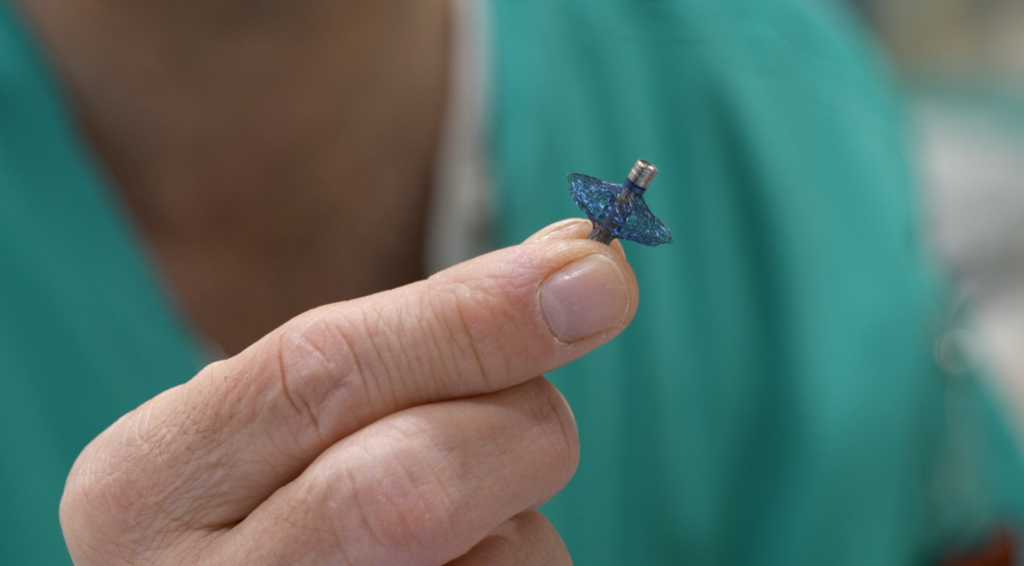A groundbreaking way of measuring fluid buildup in the body allows chronic heart failure patients to monitor their condition and treat it independently with a physician-approved response.
Tel Aviv-based startup Vectorious has created a tiny pressure sensor that is implanted directly into the heart. It is the only sensor in the world that measures the pressure in the left atrium (one of the heart’s two upper chambers) and is able to identify increases in that pressure caused by a buildup of fluid in the body.
This data on the left atrial pressure (LAP) is then transmitted to an app for the patient and their doctor.

Fluid buildup occurs during heart failure deterioration and is caused when the heart can no longer effectively pump blood around the body. That fluid buildup, especially in the lungs, causes the pressure within the left atrium to increase – and it is this that Vectorious’ V-LAP device measures.
“With fluid overload, pretty much the entire system of the body starts to collapse, and the patient gets hospitalized again and again,” Gil Visokolov, Vectorious’ senior director of product, tells NoCamels.
Through the V-LAP, both the patient and the doctor can see increases in the pressure in the left atrium weeks before any other symptoms begin to manifest. The patient is equipped with a mobile app that instructs them on the doses of a diuretic to control their fluid levels.
This helps reduce the amount of fluid in the body, eases the pressure on the heart and and avoids heart failure deterioration and hospitalization.
Visokolov explains that cardiovascular diseases (CVDs) are the number one cause of hospitalization and death in the Western world, while heart failure is the greatest pandemic of cardiovascular diseases.
In fact, according to the World Health Organization, CVDs are the leading cause of death globally. It says that some 18 million people across the world died from CVD in 2019 – representing 32 percent of all global deaths for that year.
The V-LAP sensor is put in place via minimally invasive procedure, one of the standard ways of treating blood vessels and the heart and implanting devices into them.
The sensor has no battery and both receives its charge and sends its data via proprietary technology developed by Vectorious. This is carried out by the patient, who measures the pressure twice a day by putting on a belt-like device around their chest while the two processes are carried out, which Visokolov says takes a short time.
The data extracted from the device by the belt is then sent wirelessly to the patient’s mobile app that tells the dose of diuretic they should take. Should the pressure levels in the left atrium point to a buildup of fluid at a level that cannot be treated solely by taking the diuretic, the patient’s doctor is informed so that more significant steps can be taken.
“Instead of having the patient be hospitalized,” says Visokolov, “the V-LAP system will allow you to pinpoint the treatment and to pinpoint the fluid levels.”

The data and recommended treatment entirely rely on a physical reliable indicator – the LAP and the treatment plan supplied by physicians – without the use of artificial intelligence, he says, as the company decided to use actual diagnoses rather than predictive algorithms.
Visokolov explains that using the V-LAP device and the patient self-management concept significantly reduce the burden on the medical system and medical professionals, who are mostly already overburdened. This is because most of the time the patients manage themselves by monitoring their LAP and taking the appropriate diuretics, and the physician needs to intervene only as an exception.
This unique concept, which is based on the most accurate and reliable heart failure indication, can reduce the need for hospitalization as it acts as a preventative therapy.
“Heart specialists, very experienced physicians, and heart center nurses are dealing with chronic diseases,” he says. “They are overworked and overloaded.”
Sign up for our free weekly newsletter
SubscribeIndeed, Vectorious says that intervention in the early stages of LAP increase, before symptoms appear, can lead to a dramatic reduction in hospital readmissions for heart failure and better quality of life for the patients.
Heart failure patients taking charge of their own care, Visokolov says, is a “revolutionary” approach to CVDs.
“We see patients feel empowered, like they finally have a sense of control,” he says.
But not only does this method imbue the patient with a greater sense of control over their illness and as a result make them more likely to adhere to the testing regimen, he explains, it also helps with the emotional impact of being a heart failure patient.
“Heart failure, psychologically, is different to other diseases,” Visokolov says.
“It’s different to cancer that you fight against – you don’t fight against your heart. And it puts you in a very complex and emotional place.”

According to Visokolov, Vectorious is the only medtech company using LAP to measure fluid buildup due to heart failure. And this, he says, is largely due to the company’s unique technology and R&D.
The startup was founded in 2011 by Dr. Eyal Orion, a physician with experience of medical devices, and Oren Goldshtein, an electrical engineer, who both recognized the need for a way to easily measure LAP without catheterization.
And today the company has investors who appreciate the unique technology and its potential, Visokolov says, without identifying them.
He acknowledges that the technology could be transferable and used to diagnose and treat other diseases, but says that for now the focus is on CVD.
“The implantable sensors and our impact decisions mean that we’re not limited only to pressure sensing,” says Visokolov. “We have all the building blocks required to make the implantable sensor [for multiple purposes].”
The LAP sensor is currently in a clinical trial involving dozens of patients in Israel and Europe, with trials also starting soon in the US.
Visokolov says that the company has also gathered data from thousands of heart failure patients that they have been able to use to further understand the implications of left atrial pressure.
“Before Vectorious, it was mainly theory based on catheterization, which is done every time patients are hospitalized,” he says.
“Now we have this routine LAP data, which allows us to create a whole lot of science.”
Related posts

Editors’ & Readers’ Choice: 10 Favorite NoCamels Articles

Forward Facing: What Does The Future Hold For Israeli High-Tech?

Impact Innovation: Israeli Startups That Could Shape Our Future




Facebook comments